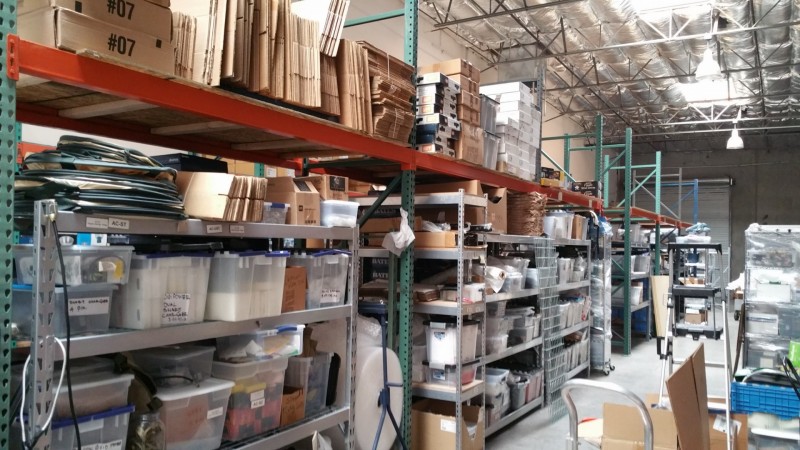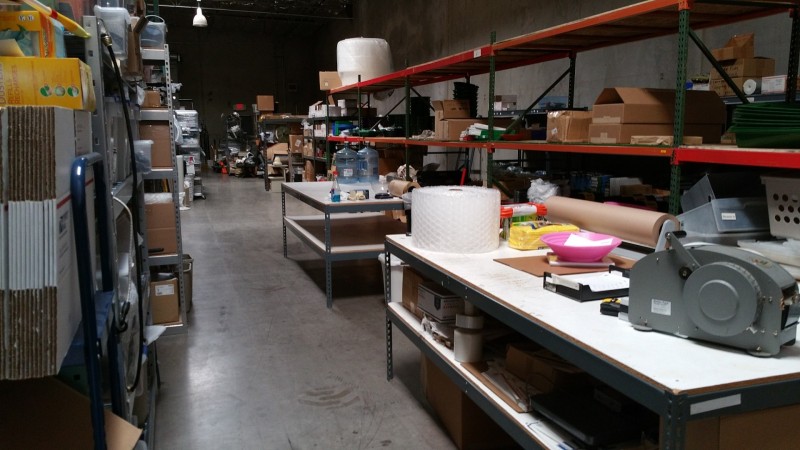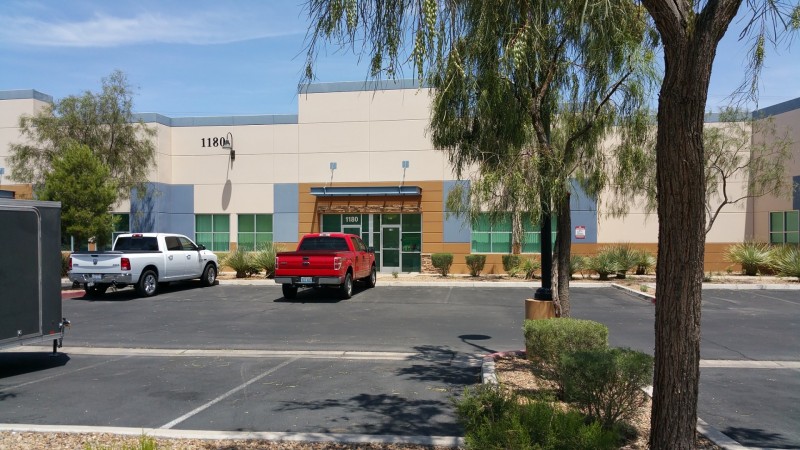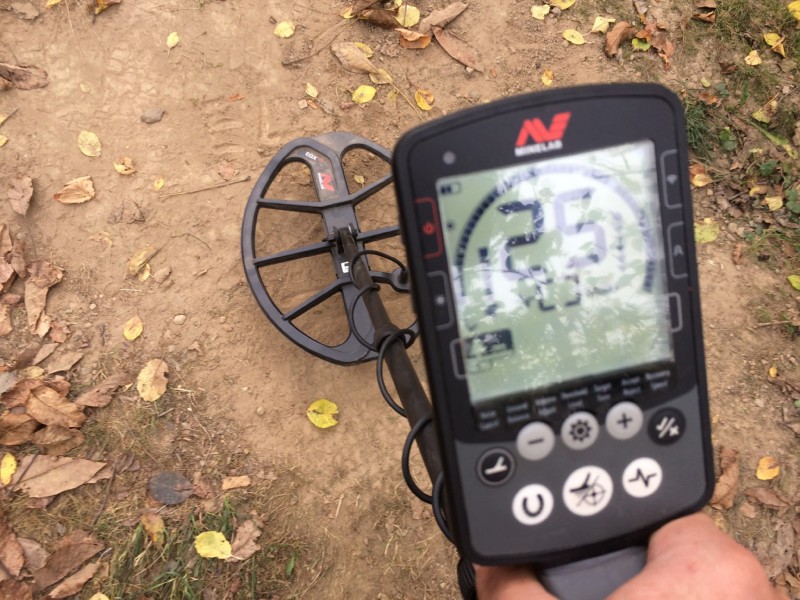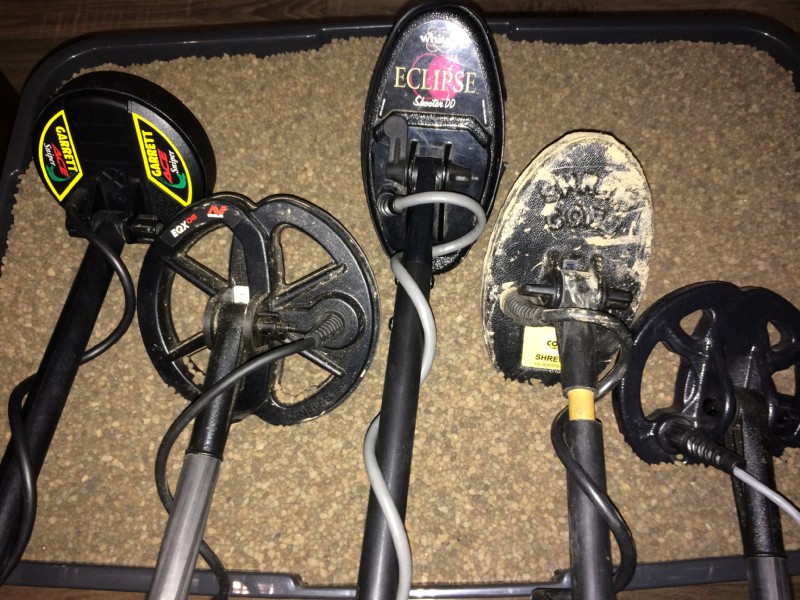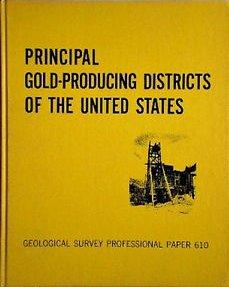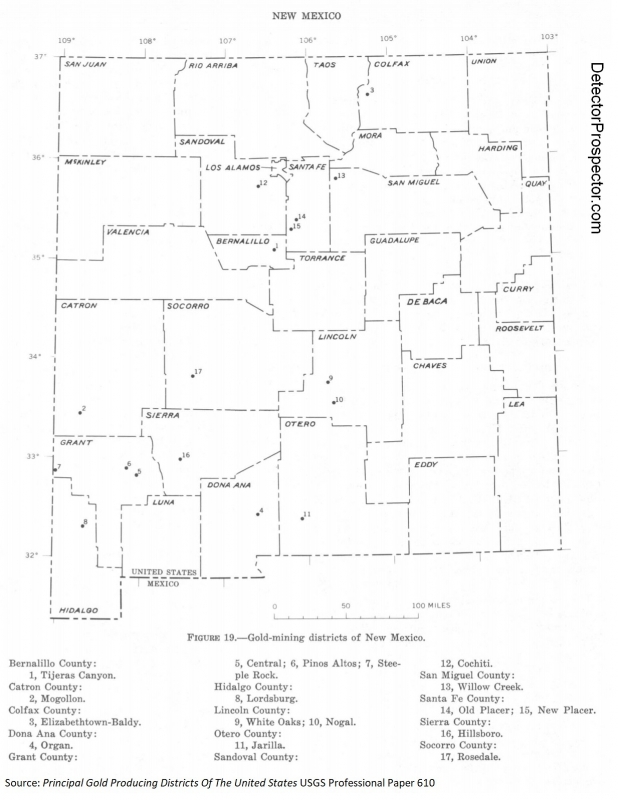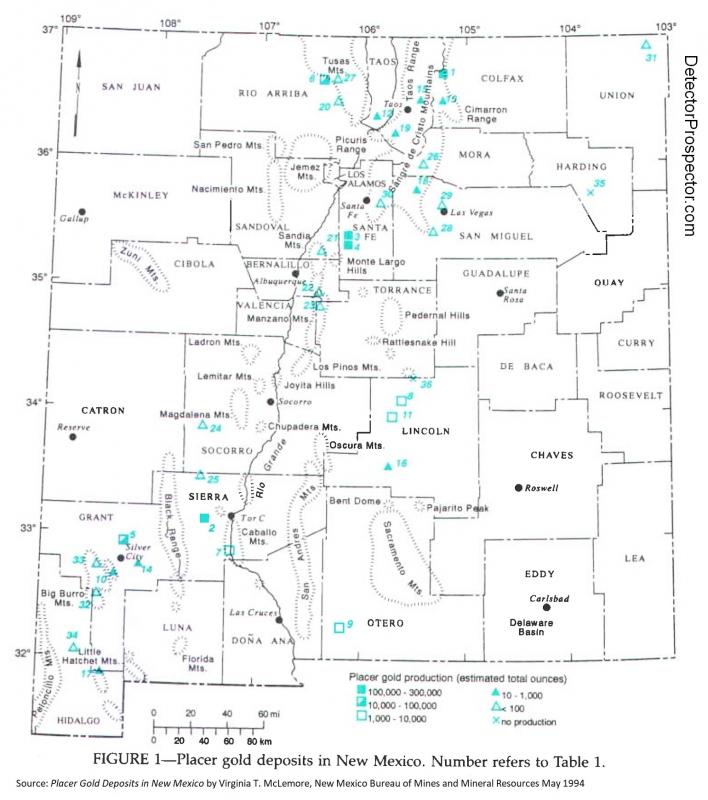Leaderboard
Popular Content
Showing content with the highest reputation on 01/27/2019 in all areas
-
Gold Basin Mining District has a long and colorful history. Starting back around 1861 the road now called Pearce Ferry Road was the trail that took the old timers down to the Colorado River. The River separated Arizona and Nevada. The Ferry was the only way for travelers to cross. Outlaws, Indians, cowboys and settlers heading to California were all part of the local landscape. This is the area where D’artagnon Jackson found an amazing find with his Gold Monster 1000 on January 22, 2019. “Dar” had purchased his Gold Monster 1000 from Doc at Doc’s Detecting in Henderson Nevada almost one year ago in January of 2018. Doc had taken him to Gold Basin for a day of one on one training. Dar lives in the state of Washington, and only gets to Gold Basin twice a year. He joins his brother, J.R. from Utah and they travel to Gold Basin to detect. Dar has been looking for elusive gold nuggets for 15 years with no success. He has owned every low end $200 detector on the market, with no success. However, armed with his Minelab Gold Monster, all of that was about to change. As he was detecting, looking for meteorites , and of course his first gold nugget, if he could be so lucky, he stumbled upon a good target. At three inches he uncovered a pull-tab. Somewhat disappointed, he said, “I remembered what Doc had taught me. Always check your hole before you fill it back in, there might be another target.” Somewhat reluctantly Dar swung the 5 X 10 coil of his Gold Monster over the shallow hole. He got a good target sound, and it was registering as non-ferrous, however the pull tab also had registered as non-ferrous. He started to dig deeper, and the ground started getting more hard packed. Ringing in the back of his head was Doc’s admonition, “When the target is deep and the ground is hard packed, it is less likely to be a trash target.” At 8 inches, Dar saw a glint of gold. Could this be his very first nugget after 15 years? NO! It was something much more impressive that spoke to the unique history of this Gold Basin area. It was an 1852 U.S. Gold dollar with a “D” mint mark. The coin was in amazing condition considering it was 167 years old. Needless to say, Dar, can’t believe that he found such a unique treasure, let alone, it was the very first piece of gold he has ever found. Think of it, this coin is 167 years old and yet this coin was minted only 76 years after the founding of our country via the signing of the Declaration of Independence in 1776. Later, after getting back to a computer, Dar found out just how special this coin is. There are only 125, 1852 mint mark “D” $1 gold pieces known to exist today. Valued at around $900 to $1,400 depending on condition and this one looks pretty good. Gold Fever? Yes, Dar has a really bad case of it now. Congratulations D’artagnon!14 points
-
OK, OK, Please I don't want to hear, "It's about time." This all started when I payed an obscene amount of money to a web site developer to design my new website. He got it 90% finished and disappeared with all of my money and left me with no instructions. HOWEVER, my guardian angels in the UKRAINE, came to the rescue. If you didn't know UKRAINE programmers are some of the best in the world. I have been dealing with these guys fro 25 years, they are freaking amazing. They actually wrote the enitre DMV software for the Michigan. So it finally occurred to me to ask if they knew a website designer proficient in WORDPRESS. Well of course they did. Enter "MAX" real name Maksim Nikolaenko. Max speaks English as do most of the programmers there. He is a savant when it comes to website design and especially WORDPRESS and Search Engine optimization. So over the past two months, using chat on SKYPE and screen sharing we collaborated to get my new site functional. So Max got me online with the new website, a site I feel is befitting a company that has been in this industry since 1992, http://docsdetecting.com/ But please be patient as I am in the midst of the arduous task of getting all of the content and thousands of items we carry input into the site. In the meantime take a look around. Tell me your overall impression. I would welcome the feedback. If you enjoy reading articles and adventures, at the very top on the left side of the home page there is a link titled Things of Interest. Take a gander. Thank you! Doc Steve's Review of Doc's Harnesses and Covers3 points
-
3 points
-
As much gold as johndoe gets working black sands for fine gold maybe we should all get shovels! Beach detecting is challenging, and a main difference is that between Florida style white sand beaches and Oregon style black sand laden beaches. Black sand does not refer to color actually. It refers to magnetic minerals like magnetite that are black in color. If a beach is black in color and nothing happens when you drop a magnet it - this is not black sand. On a true black sand beach if you drop a magnet on the beach, a huge load of sand comes up with it. Magnetic sand, laden with magnetite. Here is a picture showing magnetite layers on a beach. The sand is mostly quartz and feldspars, non-magnetic minerals. Magnetite as an iron ore is considerably heavier, and so wave action concentrates it into layers. See johndoes thread above for more examples of layering. Black sand (magnetite) layers exposed on beach Closeup of magnetite black sand. Note dark gun metal granular nature of the sand. Highly magnetic. I currently face a similar dilemma. I beach detect and I prefer a VLF for the discrimination. However, on the west coast you can lose half your depth or even more due to black sand concentrations. Single frequency detectors cannot ground balance to both saltwater and black sand at the same time. You can balance to the sand, or the water, but not both. Multifrequency fixes this problem, but severe black sands still affect multifrequency machine adversely. In fact severe magnetite will even cause a hit in pulse induction performance.... just not as bad as the other options. Pulse induction detectors lose less depth in extreme mineralization. There are many dry land prospecting machines that might do the trick, like the Minelab PI detectors. However, for salt water beach use I personally insist on waterproof detectors and so I leave those dry land units for others to consider. The waterproof pulse induction field is very limited at this time. It divides into two classes. Pulse induction metal detectors that ground balance, and those that do not. A pulse induction (PI) detector by its nature tends to ignore mineralization, so much so that in milder conditions a PI works fine without a ground balance circuit. As I noted above however a PI is not immune to mineralization. A non-ground balancing PI detector will sound off when raised and lowered over true black sands. The more concentrated the magnetite, the more intense these signals will be. The bottom line is that on real bad black sand beaches even a basic pulse induction will sound off if the coil height is varied too rapidly over the beach. In the water with troughs and depressions false signals are all but impossible to avoid. The most extreme situations require a ground balancing pulse induction (GBPI) metal detector. To sum up: Pure white non-magnetic coral beaches - most any detector will work well Even a hint of mineralization - a multifrequency detector has an edge over single frequency VLF where there is both saltwater and magnetic minerals. Moderate mineralization - you want multifrequency or basic pulse induction (non-ground balancing PI) Severe mineralization - at some point a ground balancing PI (GBPI) is required. The above conditions grade from one into the other seamlessly. Fully submersible pulse induction metal detectors Here are the current mainline waterproof PI detector offerings: Bounty Hunter - no PI Garrett - Sea Hunter Mark II (PI) and ATX (GBPI) Fisher - no PI (one on the way?) Minelab - SDC 2300 (GBPI) Nokta/Makro - no PI Teknetics - no PI Tesoro - Sand Shark (PI) White's - Surfmaster Dual Field (PI) and TDI BeachHunter (GBPI) XP - No PI Finally, here are the key specifications for comparison: Fully submersible pulse induction metal detectors Waterproof VLF Metal Detectors Compared3 points
-
Ha, "Billabong the winger he wrote the wingers book, when things are going extra good he`ll tell you things are crook, I`m telling you Sport, when things are tough and the going is rough,,,,,,,,,,,,,,,,,,,,,,,,,,,,,,,,,,". tis some words from an old OZ song that come to my mind on reading KLs "havin a go" post. Randy into him while he`s tenderised…………….. fun aside, WTG Randy, although is top fun getting gold. I tried to find the complete lyrics of that song but nothing so far.3 points
-
Hi Rods… welcome to the forum!!! Your rock presents an intriguing identification challenge for us because you’ve provided no information about it. For example, is there a mining history where it was found, did it respond to a metal detector, does the mineral feel weighty for its size / volume, is the shiny substance on your rock flexible or rigid? Or is what we see a result of light reflection as it pertains to the camera to sample angle. You see the real thing, we have to guess at what is real in the photo. Would you mind doing a simple streak test for us? It takes only about 10 seconds to do. The streak test involves lightly running the “shiny” substance on your rock across an unglazed white porcelain tile. In a pinch you can try rubbing your sample across the unglazed bottom surface of some coffee mugs or whatever is available around the house. With dark minerals, the color of the streak can be quite different from the mineral color, thus providing a very useful clue as to its identity. A streak test can readily eliminate a number of possibilities. Goethite produces a brown-yellow to yellow streak. Various forms of hematite can produce a range from a bright to quite a dark cherry red streak. Galena produces a black streak. Silver produces a silvery streak. And there are other possibilities, but there is no mistaking the difference in streak results between the minerals suggested above. Below are photos for the above suggested minerals. The goethite has a weathered surface, but look at the small exposed area of black lustrous material to see what actually exists beneath the surface. Note that galena has a distinct “grey” color and metallic luster. Specular hematite is a little more difficult because its uneven or crystallized surface makes it impossible to avoid light reflection from many faces. It is generally lustrous, but it is also primarily black. It can readily be distinguished from other similar-looking minerals such as ilmenite and magnetite by its red streak. Hopefully the photos will be of some use for you to compare to your sample. Let's add a molybdenite (a flexible mineral) photo just in case. But please consider doing the streak test and let us know the results if that is convenient for you……………….Jim.3 points
-
The Aqua Manta has finally arrived in the form of the new Fisher Impulse AQ. The Manta has been officially named the Fisher Impulse AQ, a development that happened later in this very thread. It has also been revealed a gold prospecting model is under development. Go to the link above for the latest information and photos. Or quick jump to the Fisher Impulse AQ Specifications & Data & Fisher Impulse AU Specifications & Data pages. The information below remains for historical purposes. The challenge I have for Fisher or anyone else is to make a dry land ground balancing PI that weighs under 4 lbs yet is more powerful than a TDI SL. The alternative is waterproof but under 5 lbs. The price must be under US$2000.00 Waterproof Pulse Induction Metal Detectors Compared The Fisher Aqua Manta (edit 3/2019 now known as Impulse AQ) has been rumored for some time, and confirmed by First Texas as a project nearing completion. Prior threads: January 2015 New Fisher Pulse Induction January 2018 New First Texas PI Under Development June 2018 Aqua Manta Pulse Induction Beach Detector The long story short is this is a project by Alexandre Tartar. The Manta is most likely an offshoot and improvement on the orginal Eric Foster Goldscan circuit. Alexandre has built at least three major prototype devices before the rights were acquired by First Texas. The following photos and information is derived from this thread where the V3 prototype is sold. Here are the basic specs as described in advertisement (the seller is French and translating): "I sell a "prototype" Manta v3 There are only three copies of this detector and it is the best of three .... (See mantametaldetectors website) Pulse induction, works exclusively with mono coils to the beach, possibly for the land, but no ground control Calibrated for low conductors, gold and platinum, among other. Delay 7us of 17 volts more sensitive, deeper and faster than Deepstar Equipped with a coil, Manta, latest generation she has one month, the quietest and most efficient on the market, all brands included. (it will operate on TDI and Deepstar) Connector Type TDI, it accepts all coils (mono) of TDI / GPX Weight: 1.5 kg without battery that is worn at the belt headphone jack and on / off switch on the battery pack (lipo) supplied charger more than six hours of detection at full power. Carbon Rod Anderson + extra cane down braided nylon belt military style All the possible settings and need a good PI SAT speed, TX frequency, noise threshold, delay, volume, sensitivity.... The delay was 7us , lets see gold ends very thin rings, earrings, jewelry hollow that other detectors can not see and of course, the wholesale jewelry it goes deeper Ferrous recognition by a double beep well marked" What I find interesting is this note "Pulse induction, works exclusively with mono coils to the beach, possibly for the land, but no ground control" Yet here is the picture that accompanies the advertisement. Now remember this is from March 2016, almost three years ago. The prototype clearly has labels for ground controls... Alexandre Tartar Manta V3.0 prototype The control markings as seen above: Volume Threshold Sensitivity Sat Speed. Motion. (recovery speed) Tx Frequency (transmit frequency, usually to offset for EMI mitigation) Pulse Delay. GB Type (the shorter the pulse delay, the more sensitive to tiny metal and salt water) Ground Balance (usually a ground balance control, but ad says this is lacking?) Statements by First Texas suggest version 1 of the new machine is aimed at beach use and may not be suitable for land use (gold prospecting). That in turn makes me think work on the ground balance system is lagging and may be key to the future of the machine. Will it be beach only, or have a future for gold prospecting? I have to assume the unit will be competitive when it comes to the horsepower, or why bother? Until now the Eric Foster Deepstar is generally acknowledged as one of the deepest beach PI detector’s ever made. And the ad says “more sensitive, deeper and faster than Deepstar”. That being the case what really has my interest is the weight and compactness being displayed. The following photo collage from the advertisement shows the size of the control box and belt mounted battery: Alexandre Tartar Manta V3.0 prototype Granted the battery is belt mounted, but that is one tiny control box. I have to think that First Texas can slim down the circuit board and use a top notch integrated rechargeable battery and get this machine into a very compact package - hopefully waterproof and with wireless headphone capability built in. Well, that's about all I know about this one. This thread will collect any new information as it is available. This is one of a couple detectors I am watching so fingers crossed for a 2019 release. It is encouraging that Alexandre's original website at http://www.mantametaldetectors.com/ has been taken over by First Texas and is displaying this banner: Fisher Research Labs - New Pulse Induction metal detector COMING SOON!2 points
-
Two more of their videos showing the performance of the Equinox 15" coil. The second video I list here (which I think was chronologically first of the three) shows him finding a Barber half dollar which likely is valuable enough to pay for the Eqx and both accessory coils. Beauty! I was unsure until I saw these if I needed the 15" coil....2 points
-
I always enjoy a trip to Quartzsite with beautiful weather and a warm sun. I love the solitude of exploring the lesser visited areas with the flowers beginning to bloom, lizards scurrying around and even a few bighorn sheep on the hills. Sometimes I even get lucky. On my recent trip with my Gold Monster I found two small nuggets, a 1.6 gram and a .05 gram. At the end of the day I drove into town and celebrated with a pizza at Silly Al's.2 points
-
Dang Randy. Now I feel guilty for whining. I hope you find enough gold to replace your tire and pay for your trip ..2 points
-
Well out of the blue Doc or Doc's Detecting Supply of Las Vegas sent me a goodie bag with some product to look over. Thanks Doc! Before I begin I want you to know I did not request this stuff. In order to not look like I am trading favorable comments for gear I am going to use this stuff as prizes in various forum contests I have planned (best finds, etc.). All these goodies Doc sent me will be finding new homes in the near future so stay tuned. I already have a few of Doc's products. I have one of his original Swingy Thingy support harnesses from over ten years ago. I don't use it per se but it remains in my detecting kit at all time "just in case". This is cool because Doc sent me the latest version of the Ultra Swingy Thingy to look at, and they are light years apart. The old one is little more than a strap and bungee. The new one is a full harness system. Original Swingy Thingy detector support harness I also have been using Doc's cover for the GPZ 7000 since the cover came out at the end of 2015. So I am already a little familiar with the product construction. I have not used my GPZ 7000 without that cover since the day I got it. It is a very well thought out protective cover system and I could not be happier with how mine has worked out. Doc's protective cover system for the Minelab GPZ 7000 Here is a look at the new covers for the Minelab Gold Monster 1000 and Minelab Equinox 600/800 models. The two covers are very similar. Before I forget, I want to mention that I always apply a stick on screen saver to my metal detector displays before installing any of these loose fit type pod covers. Dust and grit will get into the inside of these covers no matter what you do, and the dust between the inside of the covers and the screen can abrade the screen. I look at the pod cover as a protective cover for the entire pod, but not ones that eliminate the need for a screen protector. If you have gone without and had no issues that's great. I still recommend using separate screen savers and always apply them to my new detectors before they ever see the field. Docs' cover for the Minelab Equinox (left) and Minelab Gold Monster 1000 (right) The Equinox cover is a two piece affair, with a cover for the display pod and the armrest cup. A new arm strap is included. The Gold Monster cover includes an additional item in the form of a small cover for the upright support post. Again, new arm straps included. For those that do not like using an arm strap Doc includes a couple small velcro stick tabs that allow you to attach the cover more firmly to the arm cup using the velcro tabs. Closeup of armrest cover showing cordura nylon and stitching details Here is a little closer detail of the pod cover for the Minelab Equinox models... Detail of Doc's pod cover for the Minelab Equinox metal detector The cover simply pulls down over the top of the pod once you disconnect the coil, then make the coil connection again once the cover is installed. Two velcro straps wrap around the bottom and back of the pod to pull it down and attach it firmly in place. Two velcro sticky tabs are included for those who wish attach the cover to the pod via internal velcro tabs. This could help keep the pod from shifting in place but most people won't need them. A nice touch is the little bit of stretch material forming a band that holds the charger cable more firmly in place while in use. Equinox pod cover detail showing charger cable in place As you can see in the photo above I put the cover over the little cap and strap that protects the physical headphone port when not in use. I never use wired headphones out of water and so this worked for me, but if you wanted easy access to the headphone plug port you would want to route the strap over the cover instead of under it. The cover has two slots on each side to allow access to the Equinox pod side buttons. The thickness of the cover requires you push the tip of your finger into the slot to push the buttons, but this is easily done. Side view of Equinox cover showing button access slots The Gold Monster pod cover is simpler, just pull over and secure with a velcro strap. As noted the Gold Monster cover set includes a cover for the upright battery compartment support post - see the first picture in the post. Detail of Doc's pod cover for the Minelab Gold Monster 1000 The bottom line is I found both these covers to be well designed and constructed. Visit the Doc's Detecting website for the latest information on pricing and availability. Doc included the latest version of his Goldscreamer Brand Qweegle Bungee. Earlier versions I saw had a kind of bolt on attachment for the detector rod. This latest version attaches to the detector with a velcro strap clip not unlike the one that comes with the Minelab GPZ 7000. I really like this type of attachment since it will work on any rod size with no issues. What makes Doc's bungee unique is the quick adjustments at both ends of the bungee. Doc's Goldscreamer Brand Qweegle Bungee This is a nice stout bungee, and one that can be rigged to support almost any detector from any backpack or rucksack shoulder D-ring attachment point. However, for those in need Doc has made the Qweegle Bungee an integral part of the new Ultra Swingy Thingy harness. The Ultra Swingy Thingy is basically a large "Y" or yoke. One wide padded strap goes down your back and attaches to your pants at the belt line. The strap splits behind your neck and drops large padded straps over each shoulder. Harness rear attachment point The front padded straps end in adjustable steel clips that attach the harness to the belt line of pants exactly the same way that suspenders work. There is also a front cross-strap at chest level to tie both sides of the harness assembly together for a snug fit. There are two super oversize rings on each shoulder, either one which can act as an attachment point for the Qweegle Bungee. Click photo for closer view... Details of the Ultra Swingy Thingy Harness with Qweegle Bungee This, simply put, is a really great detector support system. Here is Doc's sales sheet below for the harness which has all kinds of details about the product. If anyone has any questions on any details of these items including any requests for any photo details - please just ask. And like I noted, all these items will be featured soon as prizes in various contest activities I plan on offering to stir up a little more action on the forums. Thanks again Doc for this surprise package. Keep up the good work filling in the gaps in available detecting gear for the avid detectorists among us! ? Doc's Ultra Swingy Thingy - click image fr larger version1 point
-
1 point
-
Just thought id share the wireless system I've been using successfully for a while now on my gpx4500. My previous wireless system suffered from broken wires and finally one of the units gave up the ghost. I didn't want the Garrett Z-Lynk or the Pro Sonic so did research into other units. I wasn't sure they would work but fortunately, they did. Was looking for something robust and small that could handle the beating my equipment gets from detecting hilly thick scrub. Did a lot of research and found the "Xvive U2 Guitar Wireless System" They are robust and the connectors swivel which is really handy when fitting the receiver to the steelphase booster as it hugs the unit nicely. The lag time is not noticeable at only 6 ms. I seem to get a good day of detecting out of them and recharge time is pretty quick, although I rarely let them go flat. I'm using a light lipo battery as the power source for the detector which I tuck under the detectors cover. So much easier being wireless than getting snagged on bushes and branches. Also easier to dig targets not being attached to the detector. Xvive U2 Guitar Wireless System Comprising of two simple and small 1/4 jack connectors that act as transmitter and receiver, the U2 is ideal for stage, home and studio use and can also connect via Bluetooth to your favourite devices, using 24 bit resolution to capture every detail in real time - uncompressed, natural, clean tone with no delay at a range of up to 100ft/30m. It uses 2.4 GHz frequency and uses WI-FI spectrum. It is digital and the sound would be as though you are using a cable. You can use up to 4 units at a time. To eliminate any possibility of interference from other devices using the 2.4 GHz frequency, we recommend the Xvive U2 wireless system not be placed within 1m of another U2 Wireless system, and more than 3m away from any WI-FI devices such as Internet Routers, Portable Hot Spots etc. Featuring a rechargeable lithium battery with approximately 5 hour life at full charge. Includes a transmitter and a receiver. Charging cable is included. The Tech Specs Brand: Xvive Model: U2 Suitable For: Electric guitar, Bass guitar and Electric Acoustic instruments with an EQ with Pickup. Range: Up to 100ft/30 metre line-of-sight transmission range Delay time: 6 ms Frequency Response: 10Hz-20kHz Channels: 6 compatible (Legal for use in Australia and New Zealand) Resolution: 24-bit Delta Sigma, 2.4GHz broadcast A/D conversion: 24-bit low-noise system Dynamic Range: 105dB Play Time: Approximately 5 hours with rechargeable lithium battery Recharge Time: Approximately 2 hours when flat Input/Output: Side-mounted 1/4-inch Jack connector ins and outs on receiver/transmitter1 point
-
1st Off, Happy New Year to all, may Good Health & Much Wealth come your way this 2019 !!!!! 2nd part of 3, different creek same Highbanker. Used as a dredge this time no pontoons & very little water. This was on a friends claim year or so before I stake mine approx. 2000 ft above. A dam was built up above and redirected creek water into a pipe line to feed water into a lake for water supply to a hydro electric plant on a lower lake. Yes I have mentioned this in other post. So 1st some prospecting was in order to decide where to dredge. I was lucky & found a corner in creek that was actually a decent hole with the bedrock coming up at end of hole, so making dams was a bit easier, one dam to hold bck what little water the feeder creeks & rain run off would supply, and then a dam for pump supply water. Needed 2 dams because 1 dam would get suck up to quickly when dredge nozzle & water pump ft valve in same hole & I needed to keep my visibility to dredge. ( see photos ) Now my H.B. Sluice M.T. into my intake pump water supply so to not suck up big dirt into ft. valve then into my shaft seal I went shopping for a ordinary desk trash basket with small enough holes to keep shaft seal destroying materials to a minimum & water flowing to pump. At the end of each day I would have to dig out 2nd hole to make sure I was ready to dredge next day, but it also was a great way to check and see if I was loosing any gold out my sluice just by randomly panning as I dug out hole and used material to build up dams. This system worked great, the more I dredge in dredge hole the deeper the water got. It was actually getting to deep to snorkel dredge but this creek the water is crystal clear & the gold would smack you in the face as it fell out of gravels into your nozzle. Wasn't getting rich, but my overhead for the day ran about $40.00 & I would have clean ups of 4 to 5 penny weights averaging $60.00 a penny weight you do the math. Dredge time approx. 6 hrs. a day. Unfortunately I never did get to the bottom of hole, pulled my equip. next spring, my knees wouldn't let me climb up & dwn the 380 ft canyon wall And I was now a claim owner with very little climbing involved. So this is just another use of a Highbanker. Next the 3rd & final part. And a special shout out to my best mining partner ever Rocco may he rest in peace & watch over us all, he would actually check on claim owner once or twice a day & come right bck to watch me. I hope this answers any questions if you are considering a Highbanker I really liked my Proline 3".1 point
-
Since Steve is looking for more pictures... I did get out Saturday afternoon. Temps said 30 deg, so figured it was a good day to see how my Vista Gold Gain likes colder weather. I have been addicted to using it since trading for it in August, in any site that is not too infested with modern aluminum. The part of the field I was hunting is usually very wet, and hence, freezes very solid...its kind of like frozen mud...once you disturb it...gets messy. The frozen solid layer 2 weeks ago was only about 2 inches...Saturday it was about 5 inches. A brief plug for anyone looking for a new shovel. I have had my Lesche 38 ground shark d-handle for more than 3 years now. It is indestructible. It was taking 3 or 4 jumps per cut to get through the ice layer...then I basically pried using my weight to get the plug up. The targets were mostly below the frozen stuff, so actually pinpointing and retrieving targets once the plug was out...pretty easy. This spot produces its share of buttons...didnt disappoint this time, either. VGG just nails the small stuff as easily as the larger items. The oval is a cufflink, it has a running fox on it...ozzie and I have both gotten multiple of these at this spot now, and I have multiples of the other ladies buttons from other hunts there as well. The object just to the left of the spoon....It is a cast item, as it has a seam. It is a decorative item, as it has two flowers on it. I will post other pictures if I can manage to get it cleaned up any better. Temps have been so low the last 4 days...no shot at detecting now unless it warms up for a week or two...i shall hope.1 point
-
1 point
-
I just got my new Equinox 800 and took it to a local park. I found the 3 items about 5 feet apart. The shot shell is made by the U.C.M Co. Called new club a paper black powder shell made from 1891 -1910! Very cool find. Does anyone recognize the bullets? They are .351 in diameter, .593 in length and 126.7gr. Thanks1 point
-
Finding a gold coin is rare enough, but one from the Dahlonega, Georgia mint is orders of magnitude more unusual/fortunate/lucky. The Dahlonega mint was in operation from 1838 to 1861 (when it was confiscated by the Confederacy, only ever minting a single denom, 1861-D dollar after that). It was created to mint coins from locally recovered gold. (Charlotte, NC mint was similarly formed and used.) $5 'Half Eagles' were minted every year the mint was open, and struck in the largest quantities. $2.50 'Quarter Eagles' were next, minted in consecutive years 1839-1857, then 1859. The $1 version (as found by Dar) was minted in continuous years 1849-1861. A single year, 1854, saw the minting of $3 pieces. The approximate total mintage for all years, by denomination: $1: 75,000. $2.50: 175,000. $3: 1,000. $5: 1.1 million. Totalled, less than 1.4 million D mintmarked coins (not to be confused with the later Denver mint issues) were made. If all done on one year on one modern denomination coin that would make it already scarce. For example, the 1914-D Lincoln and 1921 (plain) Merc each saw 1.2 million minted. Given that most gold coins minted in the US were later melted (here or on foreign lands), the surviving Dahlonega coins are likely fewer than 10,000 pieces in all denominations. Bottom line: find of a lifetime for Dar!1 point
-
1 point
-
I swear I looked and searched this topic and somehow missed that thread. Haha. Good info in it. I have tried aftermarket battery systems but always go back to the stock battery. I wish the smaller Minelab one had better battery life. I'm not buying one that only lasts a few hours at most.1 point
-
Well all this wonderful advice and a true concern for preservation of coins is starting to overwhelm me I think but I'm sticking with Ron deathray's friend. "I like them shinny". So I have now taken up DIY Alchemy and Metallurgy and have begun to make every penny pay for it's self by way of an auction. If you wish to purchase any of my Pirates Treasures please bid on them at Trademe NZ. The rest of some of my not so precious coins have found there way to the smelting pot and have begun a new life as ornaments. I thank everyone who participated in this discussion and very much appreciated your advice on cleaning coins. I will from now only refer to a coins in there oxidised condition as Toning thanks to Swapstomper Al.1 point
-
A very unique first gold but you are still a nugget virgin. Better 'luck' next time! ? Keep trying. You will find a little, tiny $50 nugget soon. Mitchel1 point
-
Outstanding, a day to remember for sure!1 point
-
1 point
-
Nice! looking at the first pic I thought to my self man that sure is a perfectly round nugget lol Congrats on the coin I'll take that any day over a nugget! strick1 point
-
1 point
-
Wow! What a find! Congrats to your friend?1 point
-
YOW. I know nothing about grading coins. That's amazing. Quite a quandary. Would I rather find a nugget or a $4000 piece of history. Doc1 point
-
Hey Doc -- You can adjust that value upwards a bit.. $1,400.00 is for a VF-20.. I think this example is gonna grade better than that even with the rub marks.. An AU-55 books at just under 4 large in my 13 year old Red Book, MS-60 = $9K, MS-63 = $27K.. That MS-62 pictured is the finest example known; it would most likely bring better than $27K if offered at auction.. Swamp1 point
-
Hi johndoe, I have to pick and choose what gets loaded to my servers. pdf files are huge, and I can't have people loading them up without review so that ability has now been locked down. I appreciate the desire to help but if you have pdfs you want to show people then link to the original source. I have replaced your file uploads with the links to the source material.1 point
-
We’re having a mild winter here in the Pacific NW, so I went out for a few hours today in search of some thawed ground and old coins. I did a little spot hopping to stay on diggable ground within this early 1900s park and was able to come home with an above average number of V Nickels. It’s not uncommon for me to come home with a couple Vs in one hunt but I think 5 is a new record for me. I also managed a a crusty wheat penny, a 1906 D Barber Dime and a Spokane United Railways Token. The little token was past 8” which I would have never believed possible until I dug it. They are very small and thin. It’s always nice to be able to get out in January in this neck of the woods.. Bryan1 point
-
Yes it's $24.95 plus $4 shipping. I just launched my website, FINALLY, and I have a gazillion products to add so please be patient. But let your heart not be troubled, I have it listed on Ebay. https://www.ebay.com/itm/323614874891 So you can pick one up there. Thank you! Doc1 point
-
1 point
-
Good man, that's persistence! I admit to being a wimp and waiting for warmer weather.1 point
-
Use the detector to find good deposits of black sand ....... Then set up a high banker sluice and run that sand with fine gold recovery mats..... You'll come out ahead with the gold vs most trinkets you may find which will likely be junk i the areas you speak of.1 point
-
Randy........I have had 3 flat tires now and finally put ten ply tires on my truck. Quartzsite rocks will eat them tires up. If you need someone to go out with while in Quartzsite give be a shout. I am always ready to go. I am over in the dome rock area.1 point
-
It has been mentioned elsewhere in this forum, but it's worthwhile to mention again. Historic and current USGS maps are on-line and you can effortlessly overlay one on the other at this site: http://historicalmaps.arcgis.com/usgs/1 point
-
Randy, you have aptly described the quintessential Quartzsite experience. Congrats on the gold; icing on the cake!1 point
-
Going Wireless on my GPX4500 http://golddetecting.forumotion.net/t23694-going-wireless-on-my-gpx4500?highlight=wireless Also jrbeaty (member here gave me a few pointers) The battery and 5 pin plug i bought of ebay.1 point
-
1 point
-
I guess all detectors need an array of coils to match varied conditions as they usually only come with one. no disputing the fact the at pro is a good machine, but if you want the lower or higher freq. you need to buy different detector not just a coil. I've purchased numerous aftermarket coils for most of the detectors I own. I have used NEL, CORS, and detech and they all seem to work great. I'd recommend the ultimate 13 coil for your at pro. it's light weight and performance make it a top contender. I have one for my whites detectors and am very happy with it. The best of luck to you in 2019 !1 point
-
Welcome to the forum, and congrats on getting out and making your first finds with your new Equinox! ?1 point
-
The only other criticism I have of Steve's review, is his pictures are much better than mine! Dang it! LOL ? Thanks again Steve. Doc1 point
-
An excellent review, Steve!!! Doc is quite the Thinker; constantly innovating products to make the Prospector/detectorist's life easier. Well done, Doc!1 point
-
Dear Steve, Thank you for the in depth review of my newest products. A couple of things I would like to add and clarify. #1 I agree 1000% with Steve, get yourself screen protector film to protect your screen from scratches. A cover can even make scratches worse because the dirt gets between the cover and the plastic of the cover. A screen protector stops the dirt from scratching your screen. #2. While the arm rest covers for the Gold Monster and Equinox look the same, (They are the same design style) THEY ARE NOT. So always specify which machine you are ordering for. If you lay one cover over the other you will see that the Gold Monster arm rest cover is significantly wider than the Equinox, which is narrow to match the dimensions of the plastic cuff. I wish they were the same, then I wouldn't have to work with different dimension cuffs when we are fabricating them. #3. The extra "hook and loop" tabs on the Equinox cover is to achieve a perfect alignment of the small side holes, directly over the side buttons. These are small buttons, two on each side of the detector and likewise the holes are small. Accordingly I wanted those holes to stay directly aligned over the buttons. In order to accomplish this we stitched a piece of LOOP inside the Equinox cover directly below the button holes, Then we give you extra piece of adhesive backed HOOK. You take these HOOK pieces and peel off the back to expose the adhesive. Stick them on your detector directly below the 2 buttons on each side of the machine. Now when you get the cover on, get those holes perfectly aligned and press down on the LOOP inside the cover and it will adhere to the adhesive backed HOOK that is on your detector and those holes will be, and will stay, perfectly aligned. #4. I know many of you have your own backpack or hydration system that you have rigged where you can use a bungee and it works well for you. The only issue I have ever had with backpacks or hydration packs is the "D" rings are too small and they have a tendency to rotate so they actually hang like a "D" instead of a U. That is why I had manufactured these large barred "O" rings. The bar keeps them from rotating, and the large "O" means you can attach your bungee without even looking because it is such a large "target." Those "O" rings are also available from me along with a piece of webbing so you can attach them to your favorite rig. Inexpensive, $5 plus s&h. They are tough NY-GLASS material. Thanks again. I just wanted Steve's opinion and input on these products, but I really appreciate the extensive review he did. Have a wonderful 2019! Keep you eyes peeled for several new innovations from Doc's Detecting Supply coming this year. Doc Doc's Detecting Supply The largest Certified Minelab Dealer warehouse West of the Mississippi1 point
-
84 catalogs, brochures, and user guides added so far! Check it out...1 point
-
There are some of us who are involved in one way or another. I lease mining properties to exploration companies. I often end up owning shares of those companies.1 point
-
.The test field is not a bad idea, I have a single 4x4 meter square to quickly retest the detector setting, and also the coil and EMI resistance. It's located in my fruit garden ... 35X35metres long=1200 squares metres and polluted with old iron, and practically cleaned from non-ferrous metals this is my 2 test ..., ... Zkušební pole není špatný nápad, mám také zkušební pole 4x4 metrů -1Test rychle zkontrolovat nastavení detektoru a také odpor cívky a EMI. Nachází se v mé ovocné zahradě ... 35 x 35 metrů dlouhé = 1200 metrů2, a znečištěné starým železem, .... čisté z neželezných kovů to je moje 2.test ..., 3. Test is my 50l ceramic rust - "Liapor" in a plastic container, - testing in high mineralized soil -4 Bar Fe3O4-TekG2-11"DD.. This very quickly revealed how to set up the detector and also the velocity sweep speed in similar conditions.... Test 3 - je moje 50l keramická hrdla - "Liapor" v plastové nádobě, - testování ve vysoké mineralizované půdě -4 bar F3O4-tekG2-11dd "cívka .. -Tato velmi rychle detekovala správné nastavení detektoru a také rychlost otáčení cívky za podobných podmínek ...1 point
-
Thanks for the advice, phrunt! I didn’t think I would be able to do much with the NOX before springtime but your comments have given me hope. The ground here hasn’t gotten to the long-lasting, hard freeze state yet so I think I’ll be able to get in some hunting and learning before it does. I read a lot of reviews on various detectors and got some great information posted by the members of this forum before deciding on the NOX. I read the owner’s manual once, then read CJC’s “From Beginner to Advanced” book about the Equinox series, and now am working my way through the owner’s manual a second time. Can you tell I’m getting stoked? I hope to have the NOX tomorrow or Friday. I look forward to the day when I too, can post something useful. Thanks again!1 point
-
Another question via email, with personal references removed. I prefer to answer these on the forum so everyone gets the benefit of the answer plus others can offer their opinions also. "I am new to metal detecting and, your site here has really helped me out. I have a couple questions that maybe you can help me out with. What are some of the geologic indicators that you look for to determining where to prospect for nuggets? I try to study some of the geology maps but I could use some further pinpointing. I have also been looking at the National map of Surficial Mineralogy. Using the aster and minsat7 maps what are some of the indicators that may point you to higher gold bearing ground? Any help would be deeply appreciated. Could you point me to some old places where you have found gold? I'm not asking to be shown active patches. Just areas that you feel are worked out. I just want to see what gold bearing ground looks like. This would help me to start to learn the commonalities and characteristics of gold bearing grounds. Still looking for that first nugget! Thanks again for any info you can provide." My method is much simpler than that. I basically look for gold where gold has been found before. Think of it like fishing. If you want to go catch salmon you have two options. You can go to where people have caught salmon before - pretty good odds here. Or you can go where nobody has ever caught a salmon before. Very poor odds! So call it prospecting using history to determine where gold has been found before, and then getting as close as I can to those places. History and proximity. Finally, I may then employ geology to narrow that search in a given area if it turns out the gold is confined to certain rock types. The first place I normally turn as a rough guide to any new location in the U.S. is: Principal Gold Producing Districts Of The United States USGS Professional Paper 610 by A. H. Koschmann and M. H. Bergendahl - A description of the geology, mining history, and production of the major gold-mining districts in 21 states. This 1968 publication obviously lacks the latest production figures but it still is a great overview to where an individual prospector can look for gold in the United States. It is a 283 page pdf download so be patient. Pay particular attention to the listed references in the extensive bibliography for doing further research. You can download this here and find many more useful free books on this website at the Metal Detecting & Prospecting Library Principal Gold Producing Districts of the United States So just for fun let's say I want to go look for gold in New Mexico. The section on New Mexico starts on page 200 and here is a quick summary of the opening paragraphs: "The gold-producing districts of New Mexico are distributed in a northeastward-trending mineral belt of variable width that extends diagonally across the State, from Hidalgo County in the southwest corner to Colfax County along the north-central border. From 1848 through 1965 New Mexico is credited with a gold production of about 2,267,000 ounces; however, several million dollars worth of placer gold was mined prior to 1848. Mining in New Mexico began long before discoveries were made in any of the other Western States (Lindgren and others, 1910, p. 17-19; Jones, 1904, p. 8-20). The copper deposits at Santa Rita were known and mined late in the 18th century, and placer gold mining began as early as 1828 in the Ortiz Mountains south of Santa Fe. In 1839 placer deposits were discovered farther south along the foot of the San Pedro Mountains. The earliest lode mining, except the work at Santa Rita, dates back to 1833 when a gold-quartz vein was worked in the Ortiz Mountains. In 1865 placers and, soon afterward, quartz lodes were found in the White Mountains in Lincoln County; in 1866 placer deposits were discovered at Elizabethtown in Colfax County, and silver-lead deposits were discovered in the Magdalena Range in Socorro County. In 1877 placers and gold-quartz veins were found at Hillsboro, and in 1878 phenomenally rich silver ore was found at Lake Valley in Sierra County. The mineral belt of New Mexico is in mountainous terrain that lies between the Colorado Plateau on the northwest and the Great Plains on the east. It is a zone of crustal disturbance in which the rocks were folded and faulted and intruded by stocks, dikes, and laccoliths of monzonitic rocks. Deposits of copper, lead, zinc, gold, and silver occur locally throughout this belt. Some deposits of copper and gold are Precambrian in age, but most of the ore deposits are associated with Upper Cretaceous or Tertiary intrusive rocks. The gold placers were probably derived from the weathering of these deposits. In later Tertiary time lavas spread out over wide areas of the State, and fissures within these rocks were later mineralized. These fissure veins are rich in gold and silver, but in most places they are relatively poor in base metals. In New Mexico, 17 districts in 13 counties yielded more than 10,000 ounces of gold each through 1957 (fig.19). Figure 19 is a handy map showing us where you want to look in New Mexico and also where looking is probably a waste of time. Click for larger version Gold mining districts of New Mexico The map shows what the text said "The mineral belt of New Mexico is in mountainous terrain that lies between the Colorado Plateau on the northwest and the Great Plains on the east." Sticking to this area is going to be your best bet. Based just on this map I see two areas of general interest - the central northern area, and the southwestern corner of the state. The text mentions that placer deposits were discovered at Elizabethtown in Colfax County, and the map shows that as the Elizabethtown-Baldy mining district. Following along in the text we find this: "The placer deposits along Grouse and Humbug Gulches, tributaries of Moreno Creek, each yielded more than $1 million in placer gold and silver. Another $2 million worth of placer gold and silver was recovered from the valleys of Moreno and Willow Creeks (Anderson, 1957, p. 38-39), and some gold also came from the gravels along Ute Creek. Graton (in Lindgren and others, 1910, p. 93) estimated the placer production of the Elizabethtown-Baldy district prior to 1904 at $2.5 million, and C. W. Henderson (in U. S. Bureau of Mines, 1929, pt. 1, p. 7 40) estimated the production through 1929 at about $3 million (145,138 ounces). The total placer production through 1959 was about 146,980 ounces." The reference material from the passage above is in the back of the book and is where we can get real details. Google is our friend. This stuff used to take me lots of visits to libraries! Anderson, E. C., 1957, The metal resources of New Mexico and their economic features through 1954: New Mexico Bur. Mines and Mineral Resources Bull. 39, 183 p. Lindgren, Waldemar, Graton, L. C., and Gordon, C. H., 1910, The ore deposits of New Mexico: U.S. Geol. Survey Prof. Paper 68, 361 p. Henderson, C. W., 1932, Gold, silver, copper, lead, and zinc in New Mexico: U.S. Bur. Mines, Mineral Resources U.S., 1929, pt. 1, p. 729-759. That is more than enough, but let's also Google placer gold new mexico Lots of great links there, but two jump out: Placer Gold Deposits of New Mexico 1972 USGS Bulletin 1348 by Maureen G. Johnson Placer Gold Deposits in New Mexico by Virginia T. McLemore, New Mexico Bureau of Mines and Mineral Resources May 1994 Notice the source of the last one. Most states with much mining have a state agency involved that can be a good source of information and in this case it is the New Mexico Bureau of Mines and Mineral Resources. That last one is a real gem and contains this passage: "All known placer deposits in New Mexico occur in late Tertiary to Recent rocks and occur as alluvial-fan deposits, bench or terrace gravel deposits, river bars, stream deposits (alluvial deposits), or as residual placers formed directly on top of lode deposits typically derived from Proterozoic, Cretaceous, and Tertiary source rocks (eluvial deposits). During fluvial events, large volumes of sediment containing free gold and other particles are transported and deposited in relatively poorly sorted alluvial and stream deposits. The gold is concentrated by gravity in incised stream valleys and alluvial fans in deeply weathered highlands. Most placer gold deposits in New Mexico are found in streams or arroyos that drain gold-bearing lode deposits, typically as quartz veins. The lode deposits range in age from Proterozoic to Laramide to mid-Tertiary (Oligocene-Miocene) (Table 2). There are some alluvial deposits distal from any obvious source terrains (Table 2). Eluvial deposits are common in many districts; some of the larger deposits are in the Jicarilla district." So now we have a lifetime of ideas on where to go and a basic idea of the geology. And an even better map! Click for larger version. Placer gold deposits in New Mexico Let's look for specific site information. 1. Go to http://westernmininghistory.com/mines 2. Click on New Mexico Mines 3. Click on Colfax County Mines 4. Click on Elizabethtown - Baldy District Here you will find basic site information, references, and a zoomable map with alternate satellite view. An alternate site... 1. Go to https://thediggings.com/usa 2. Click on Browse All States 3. Click on New Mexico 4. Click on Browse All Counties 5. Click on Colfax At this point note you can browse mining claim information or deposit information. Researching mining claims, land ownership, etc. is another topic but here is one source of mining claim location information. For now.... 6. Click on Browse All Deposits or Use The Interactive Map 7. Click on Elizabeth - Baldy A little more detail than the previous site, including this note "SOME FAIRLY COARSE NUGGETS IN WILLOW, UTE, SOUTH PONIL CREEKS, GROUSE AND HAMBURG GULCHES, MORENO RIVER" One more... 1. Go to https://www.mindat.org/loc-3366.html 2. Way down at bottom click on New Mexico 3. Way down at bottom click on Colfax County From here you can dig into all kinds of specific site information but the navigation is a real mess. Have fun! Historic claim staking activity can be a clue. You can get the Big Picture by looking at Mine Claim Activity on Federal Lands for the period 1976 through 2010 OK, that really should have answered your question. As far as places I have been, they are nearly all in Alaska and can be found here. Now, I did all the above from scratch with no real prior information on New Mexico in about 2 hours. You can do the same for any state. However, finding where the gold is really is the easy part. The hardest part by far is finding out who controls the land and getting proper permission for access. In Alaska everything is covered by thick ground cover, so opportunities for metal detecting are strictly at creek level, and nearly always claimed. The process there is simple - find out who owns the claims and get permission for access. In most of the western U.S. there is far less or no ground cover, and so getting in the vicinity of and searching around or near mining claims without being on them is a far more viable option than in Alaska. Or you can try and get permission to access the properties. You still need to be able to track down property locations and owners however. For private property I subscribe to and use OnXMaps for my PC, Google Earth, iPad, and iPhone. It quickly maps private property and gives you access to tax roll information about the owners. Tracking down mining claims is easy in the big picture and harder in the details. The Diggings referenced before has interactive claims maps. I subscribe to Minecache for their Google Earth overlay. However, the most comprehensive source with the deepest repository of Land Ownership information is Land Matters. They have online claim mapping with direct links to claims owner information. Note that all online sources have a lag time between the actual staking of a claim on the ground and when it reaches the online systems, if ever. I say if ever because some claims exist solely at the county or state levels and there is no good way to find them short of visiting local recorder's offices or eyeballs on the ground. Prior thread on finding claims information. Finally, I am not an expert geologist by any means. This is just how I go about it, but any tips, hints, advice, or information anyone is willing to share on this thread are very welcome!!1 point


.thumb.jpg.77e4cb5bf39d44bdd2050d2edb7dfdb1.jpg)

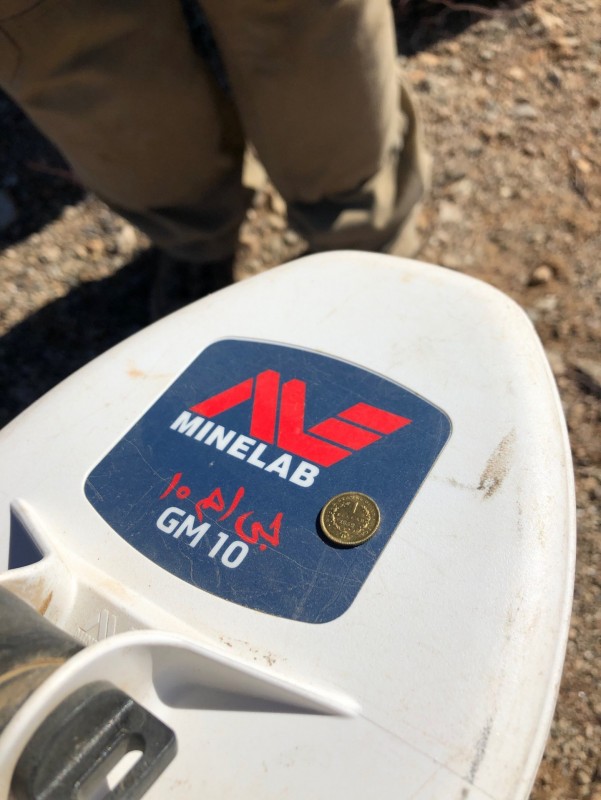
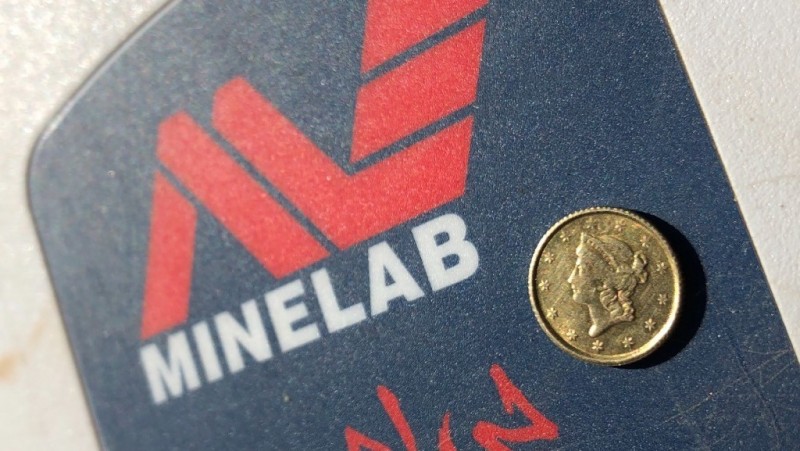
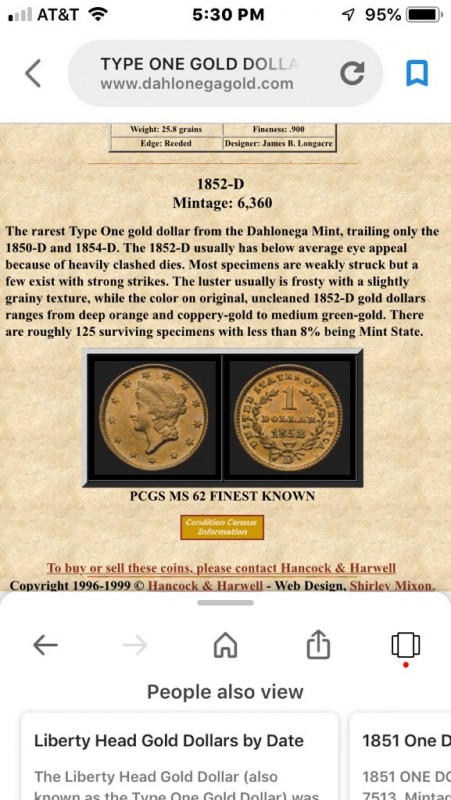
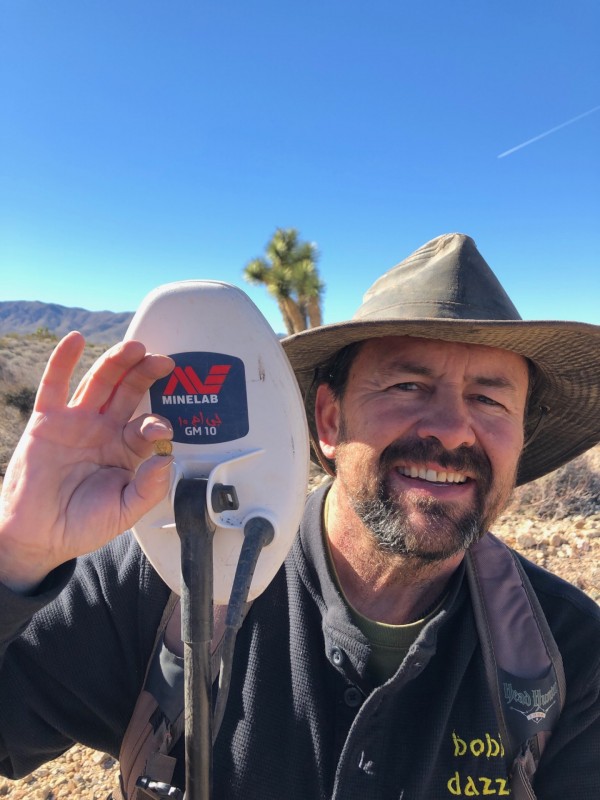
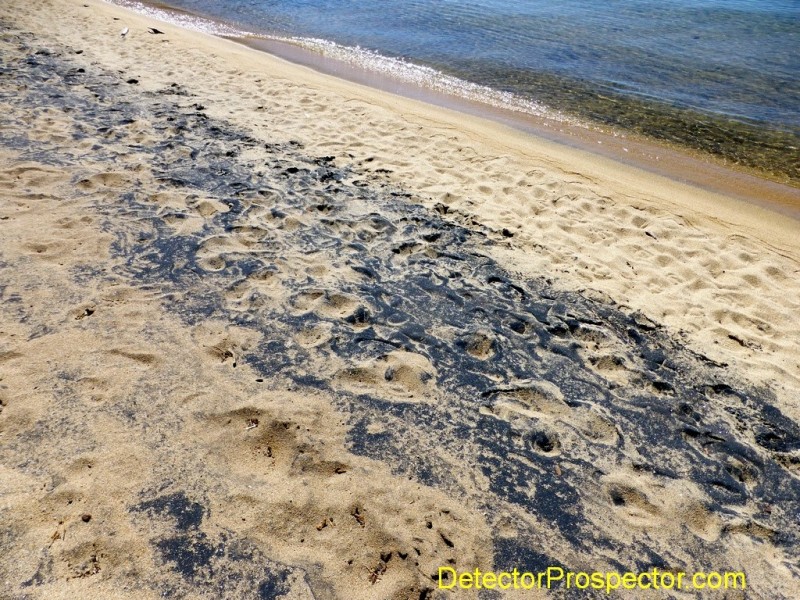
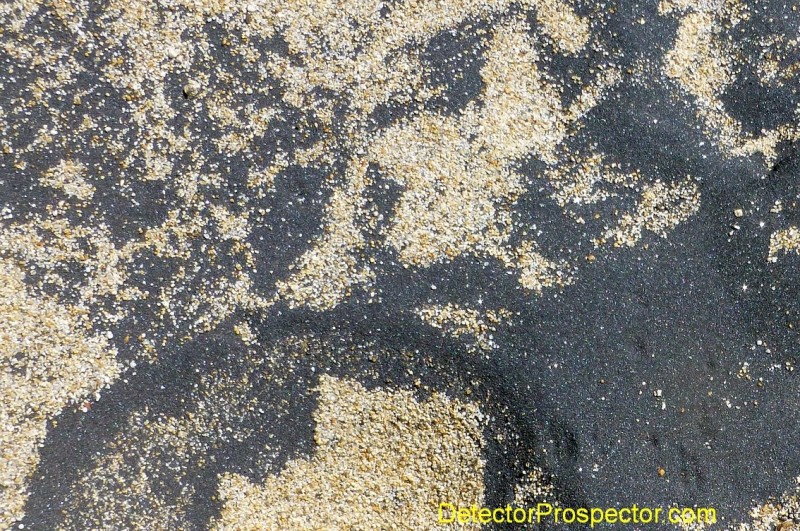
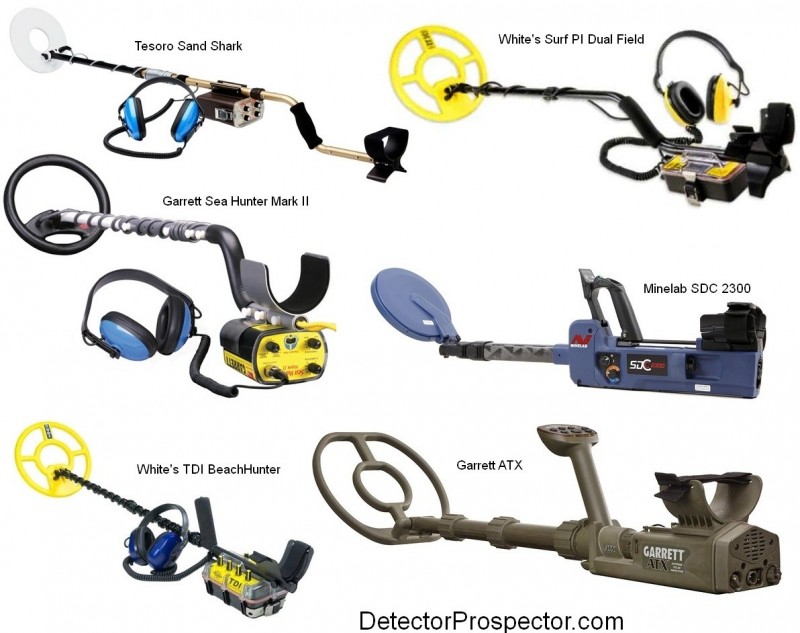
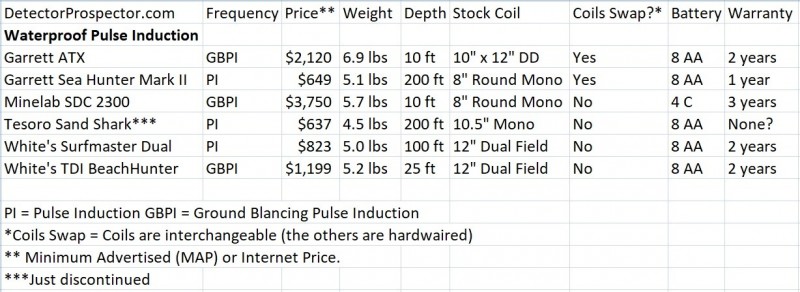
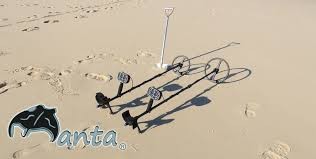
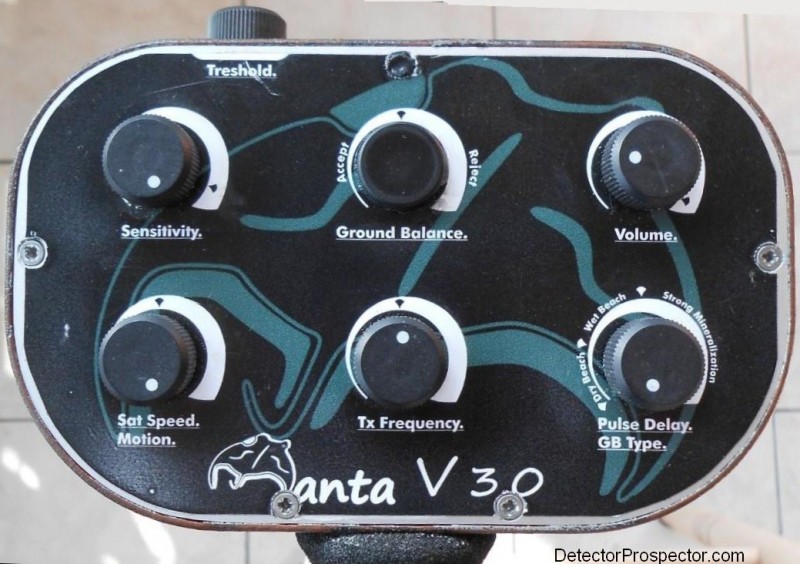
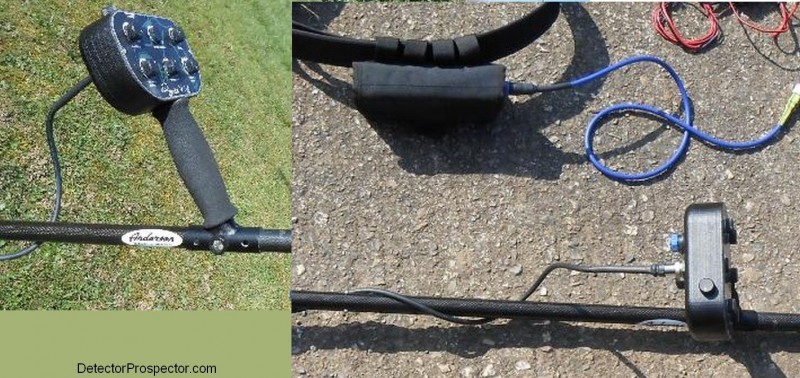
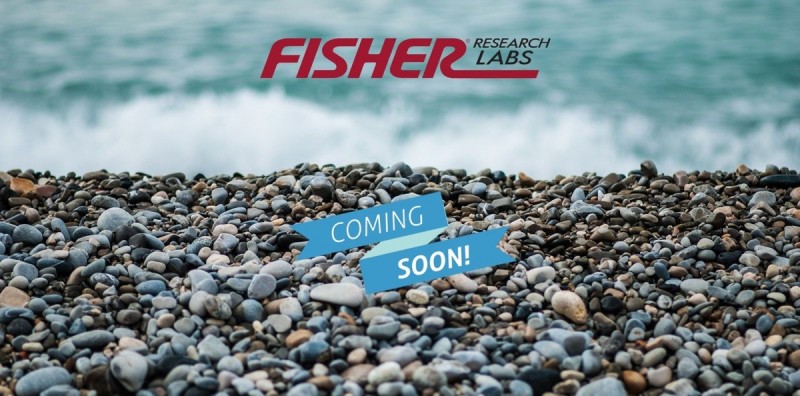
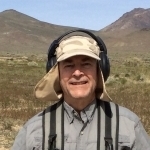
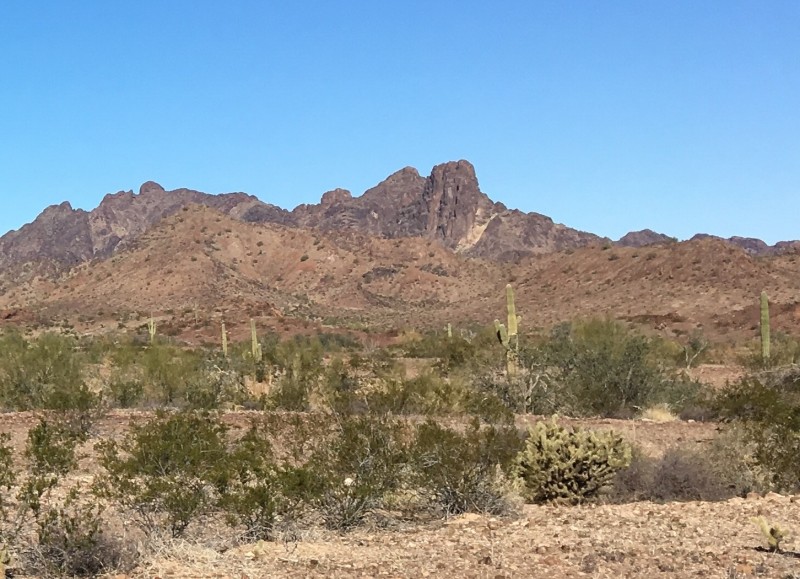
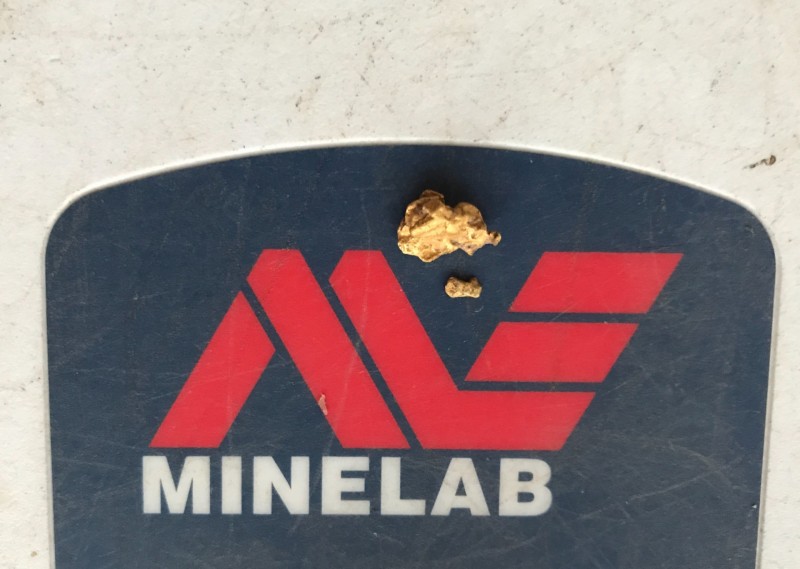
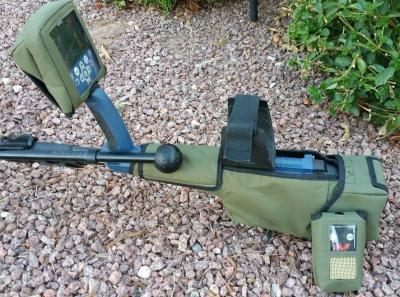
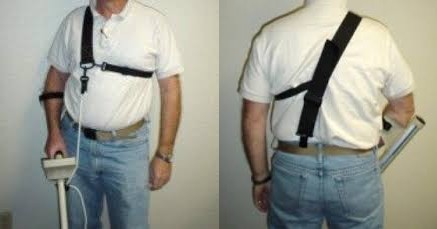
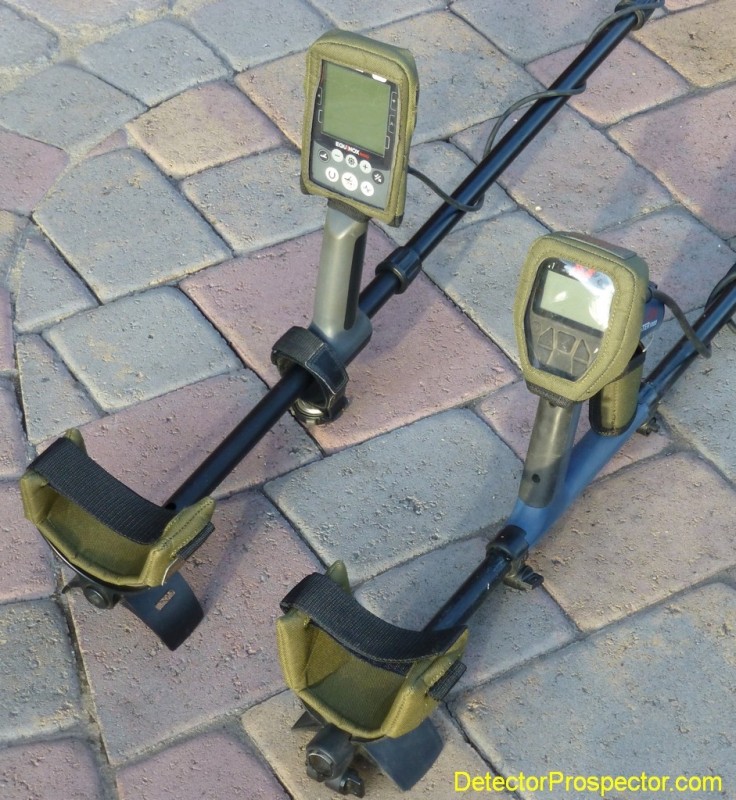
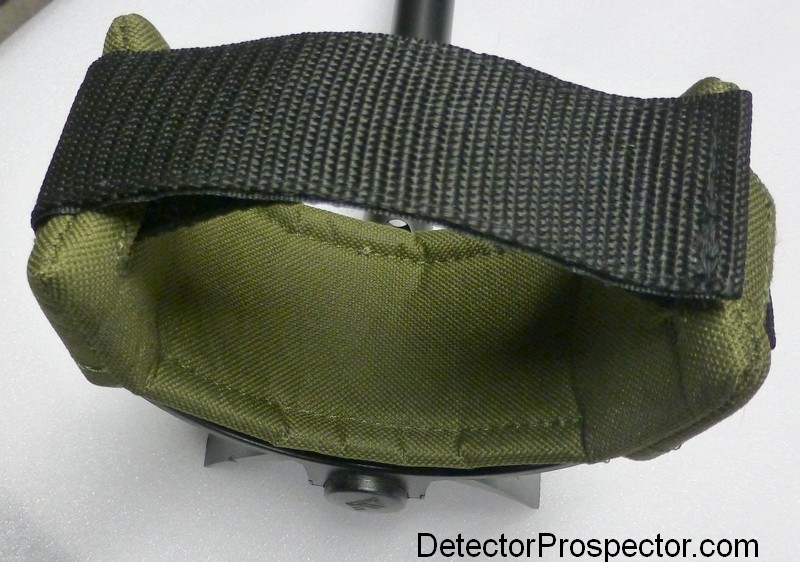
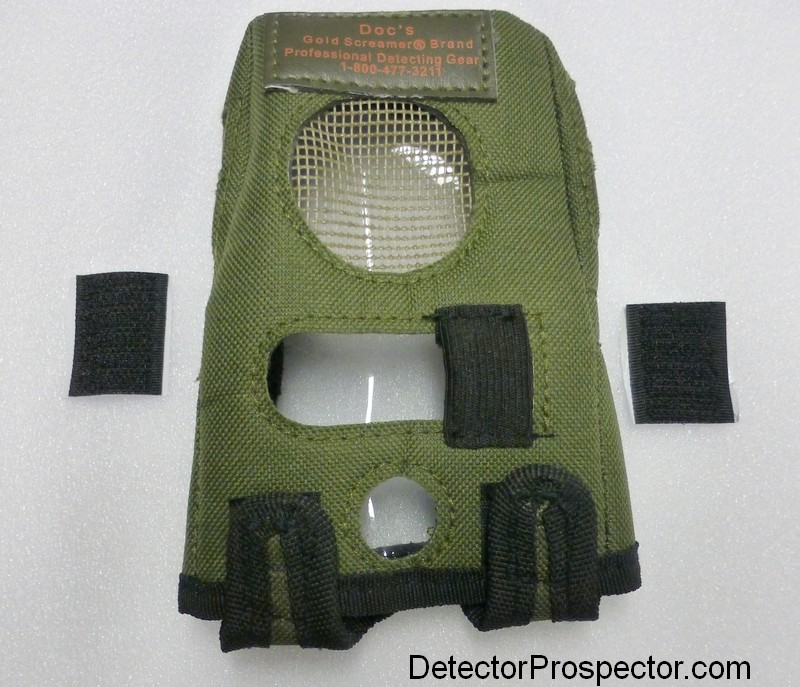
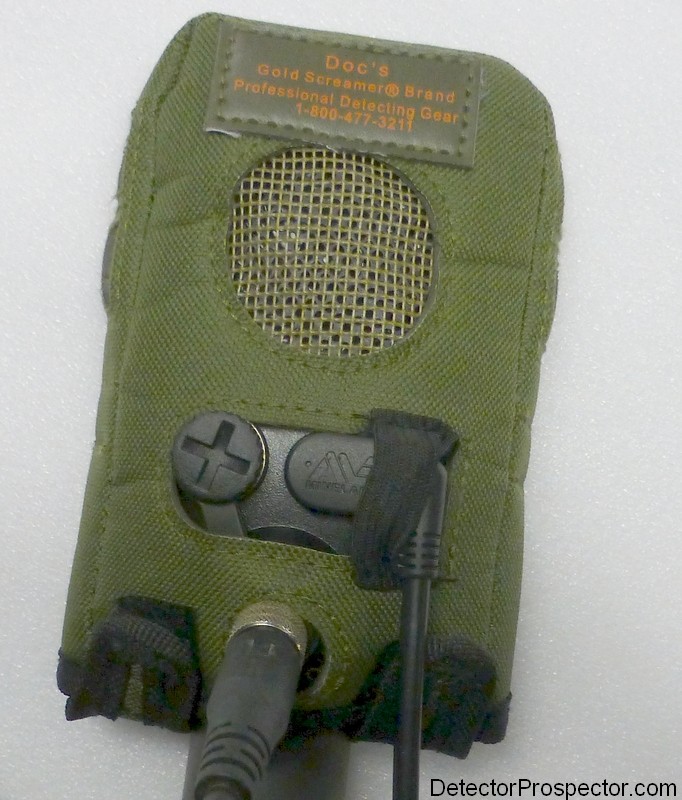
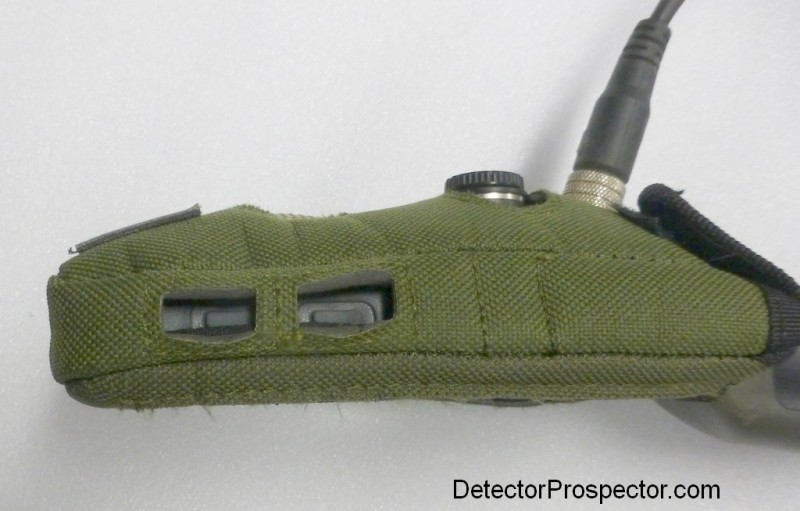
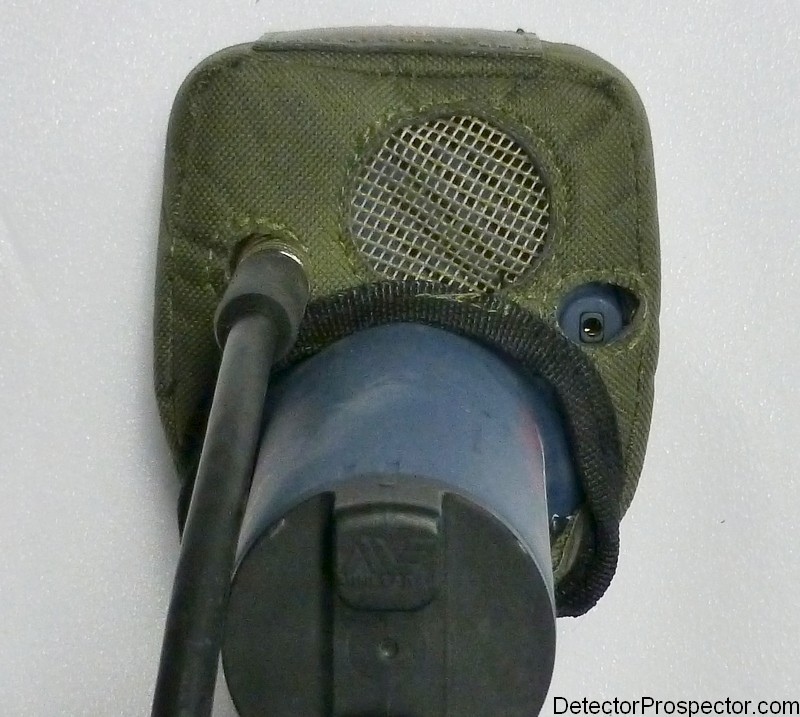
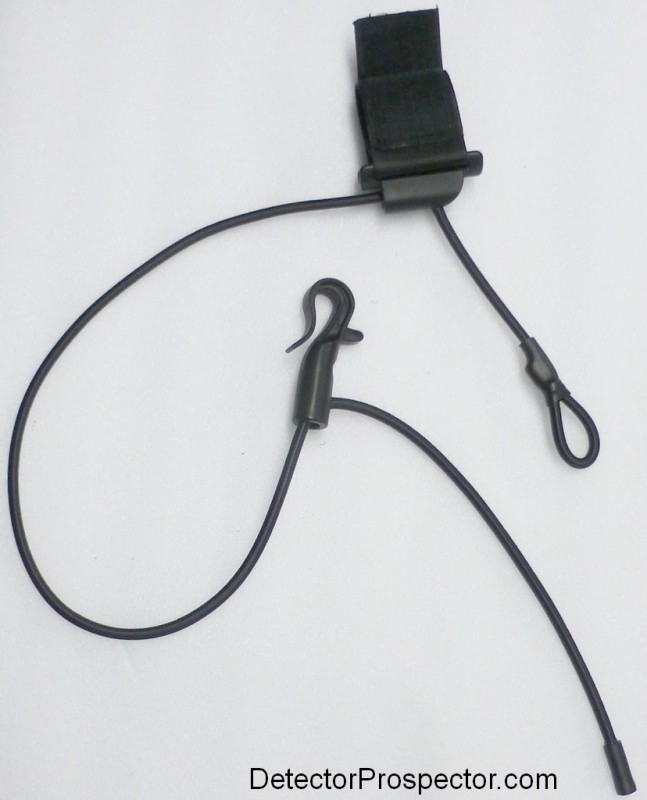
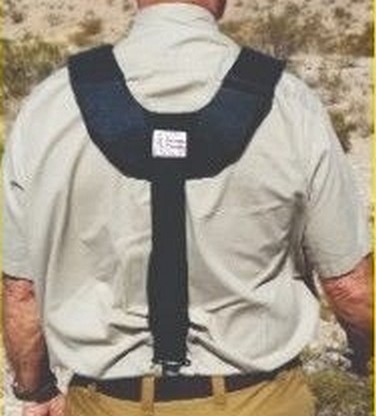
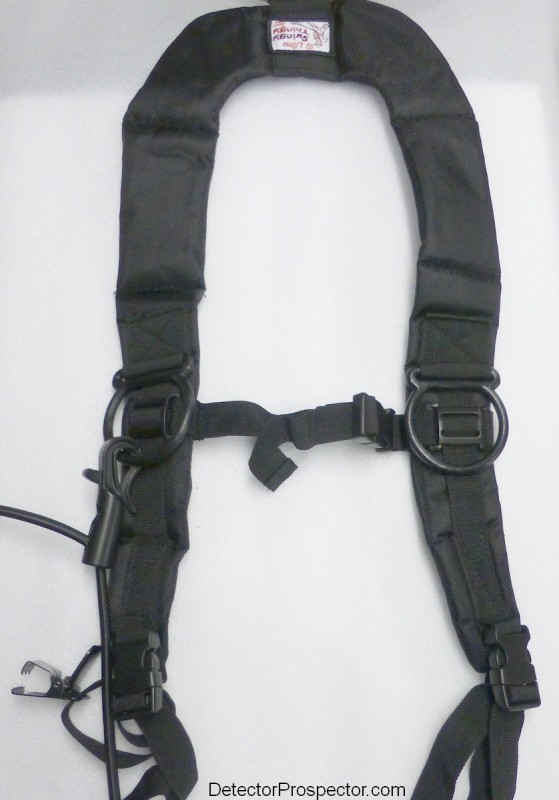
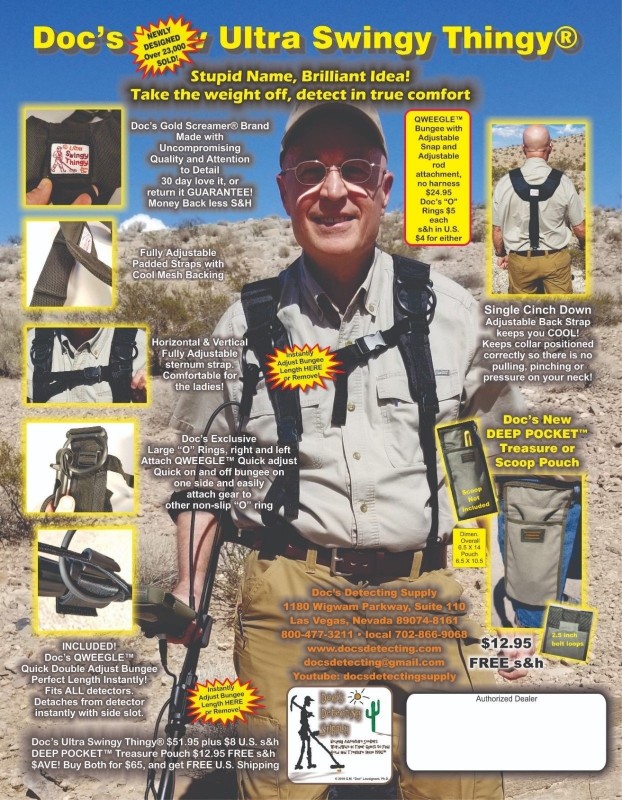

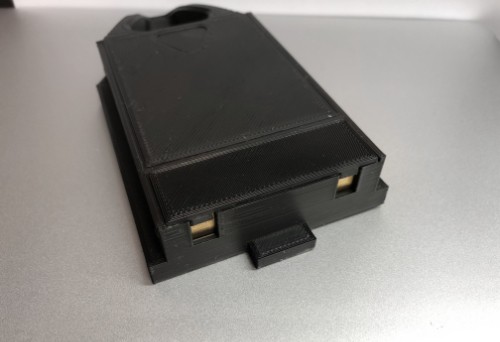
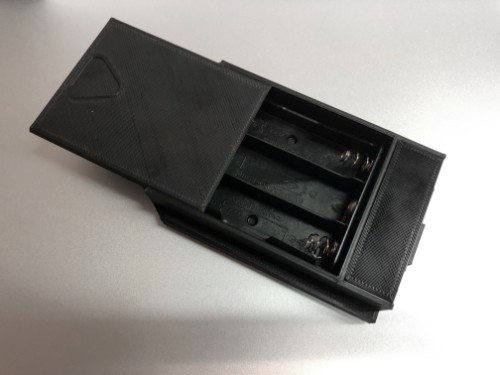
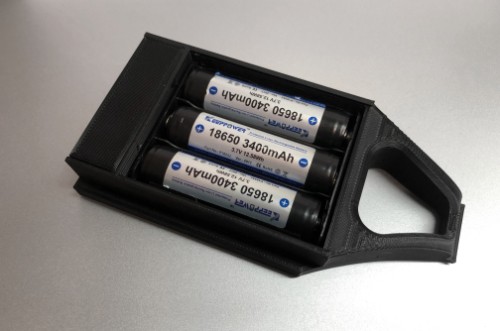
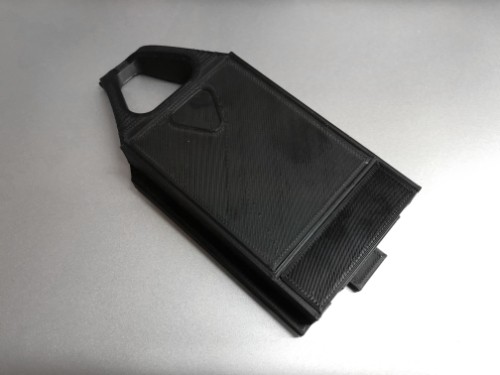


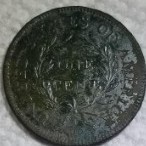
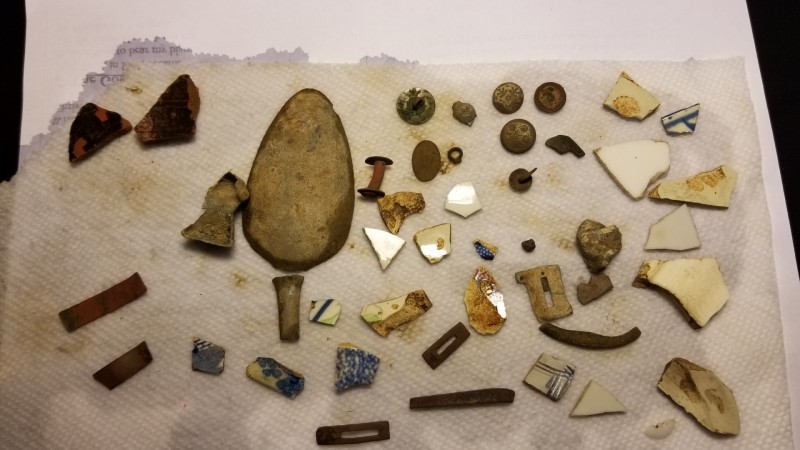
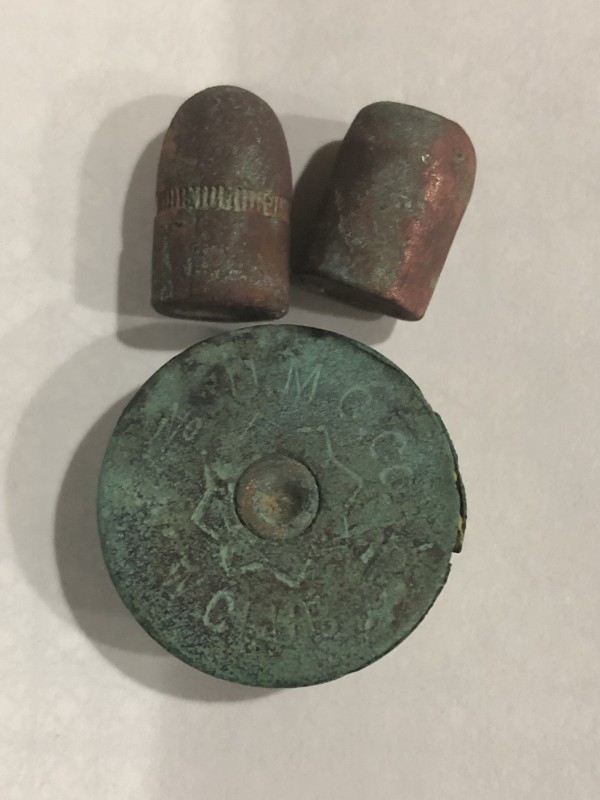

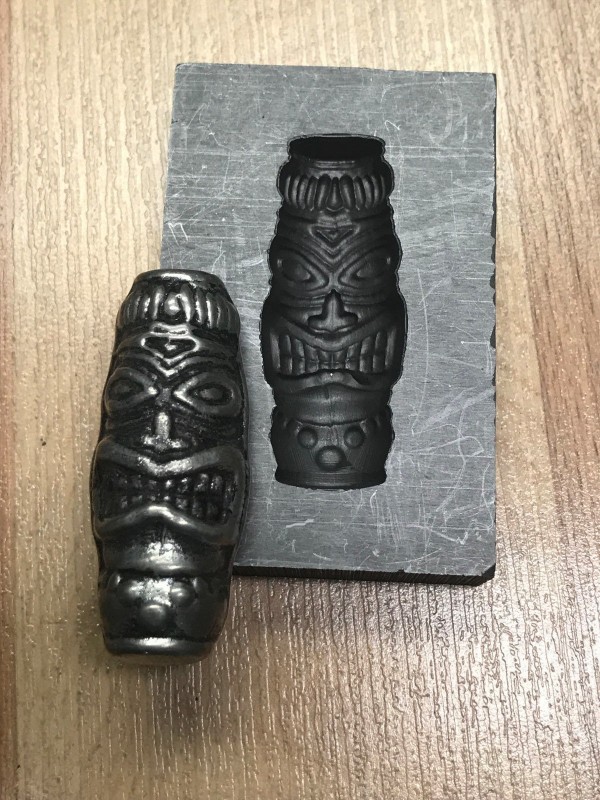
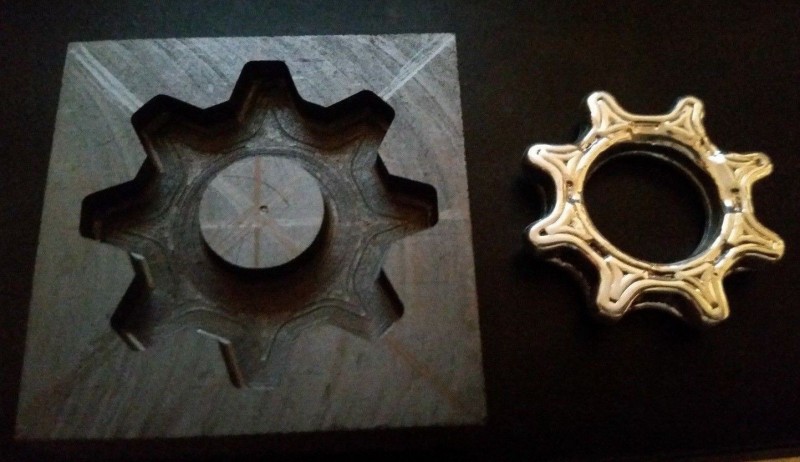



.jpg.d36fcd52325fe8a6a366d3944c8806e4.thumb.jpg.7439025c7a6d125b76c4d4495030cde4.jpg)


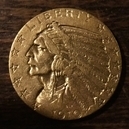
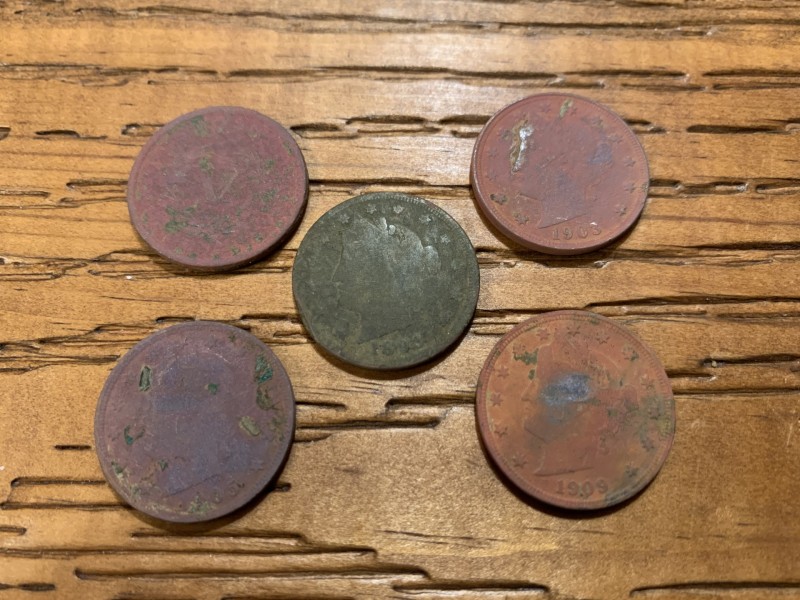
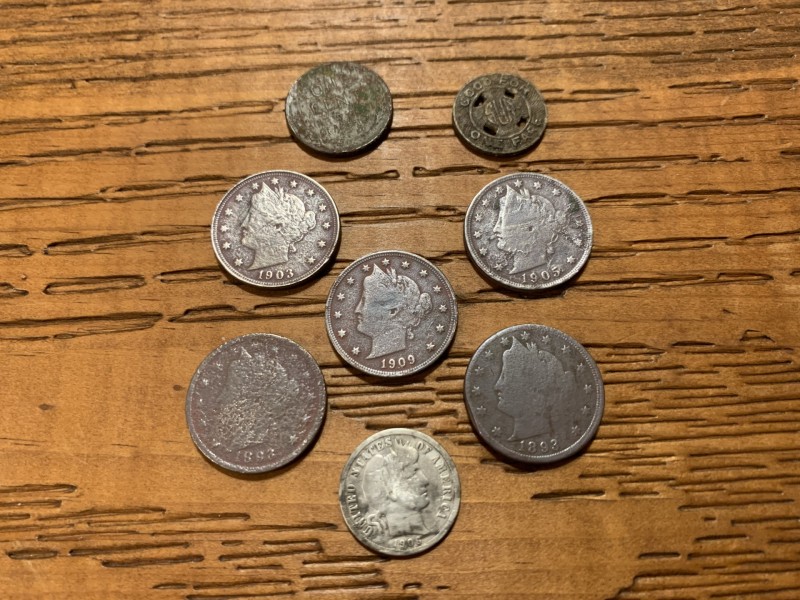
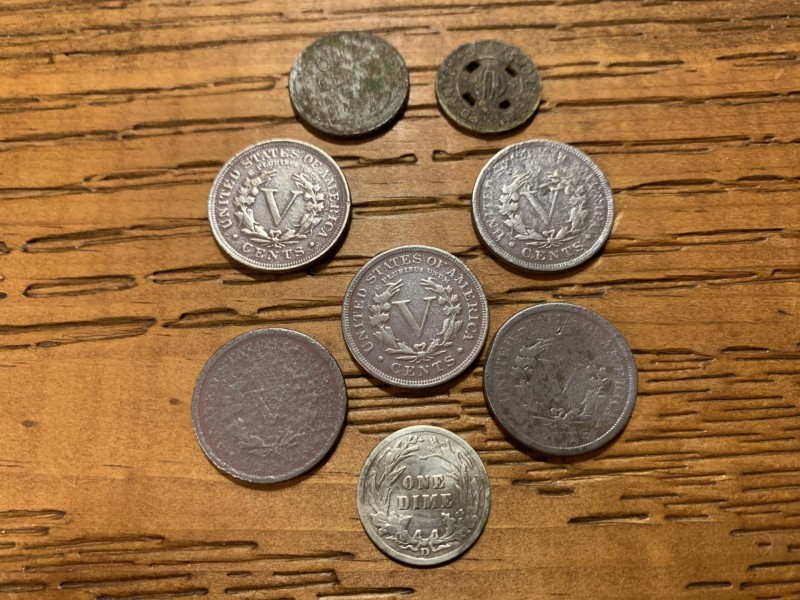
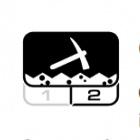
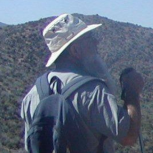

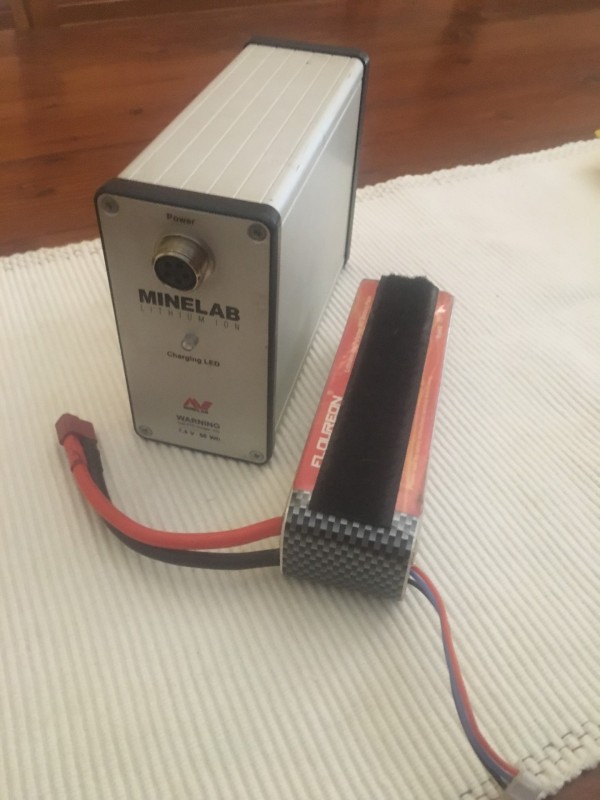


.jpg.27df4674cbf2d5d8f56fa32d899a40c9.jpg)
